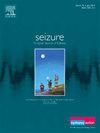反射性癫痫的临床特征和预后因素:来自台湾队列的见解
IF 2.7
3区 医学
Q2 CLINICAL NEUROLOGY
引用次数: 0
摘要
目的探讨台湾地区反射性癫痫患者的临床特点、治疗及预后。方法选取2000年7月~ 2024年5月在台湾林口市长庚纪念医院收治的由特定诱发因素诱发的反射性癫痫(RE)患者。所有患者至少有12个月的随访。分析了人口统计数据、抗癫痫药物治疗、刺激避免和癫痫发作结果。我们进一步根据刺激的性质将患者分为外源性和内源性RE组。我们还根据他们的癫痫控制情况将他们分为持续发作组和无发作组。采用Fisher精确检验和独立样本Mann-Whitney U检验评价临床因素与预后的关系。进一步进行多因素logistic回归分析以确定癫痫发作结局的预测因素。结果本研究对81例反射性癫痫(RE)患者进行了分析,重点分析了外源性(光敏性)和内源性(mah - jong相关)癫痫发作诱因。外源性RE患者(平均年龄40.4岁)明显小于内源性RE患者(平均年龄64.4岁,p <;0.001),且反射性癫痫发作明显更早(21.9年vs 49.7年,p <;0.001)。外源性RE患者自发性癫痫发作的比例(98%)高于内源性RE(40%)。外源性脑电图异常发生率(94.1%)高于内源性脑电图异常发生率(66.7%)。98%的外源性RE患者接受了抗癫痫药物(asm)治疗,平均每个患者2.2个asm,而内源性RE患者为73.3%和1.2个asm。此外,内源性RE患者的刺激回避率明显更高,为43.3%,而外源性RE组为3.9% (p <;0.001)。两组均获得相似的无癫痫发作结果(外在RE组为68.6%,内在RE组为63.3%),但刺激避免与持续癫痫发作可能性降低独立相关(p = 0.038),优势比(OR)为0.110。结论与外源性RE相比,内源性RE的自发性和反射性癫痫发作较晚,避免发作触发因素在内源性RE和无发作患者中更为常见,提示避免刺激对更好的癫痫控制和预后至关重要。另一方面,外源性RE患者的触发回避率较低,但更有可能接受ASM治疗,这表明ASM对于控制由于避免环境触发的挑战而引起的癫痫发作至关重要。尽管存在这些差异,但两组均获得了相似的无癫痫发作结果,强调了根据反射性癫痫发作类型量身定制管理策略的必要性。本文章由计算机程序翻译,如有差异,请以英文原文为准。
Clinical profiles and prognostic factors in reflex epilepsy: Insights from a Taiwanese cohort
Purpose
To investigate the clinical characteristics, treatment, and prognosis of patients with reflex epilepsies in Taiwan.
Methods
Patients with reflex epilepsies (RE) induced by specific trigger factors from July 2000 to May 2024, were recruited at Chang Gung Memorial Hospital, Linkou, Taiwan. All patients had at least 12 months of follow-up. Demographic data, antiseizure medication (ASM) treatment, stimulus avoidance, and seizure outcome were analyzed. We further divided the patients into extrinsic and intrinsic RE groups based on the nature of stimuli. We also categorized them into ongoing seizure and seizure-free groups based on their seizure control. Fisher's exact test and Independent-Samples Mann-Whitney U Test were used to evaluate associations between clinical factors and prognosis. Multivariate logistic regression analysis was further carried out to determine the predictors of seizure outcomes.
Results
In this study, 81 patients with reflex epilepsies (RE) were analyzed, focusing on those with extrinsic (photosensitive) and intrinsic (Mah-Jong-related) seizure triggers. Patients with extrinsic RE were significantly younger (mean age 40.4 years) than those with intrinsic RE (mean age 64.4 years, p < 0.001) and had a notably earlier onset of reflex seizures (21.9 years vs. 49.7 years, p < 0.001). A higher proportion of extrinsic RE patients experienced spontaneous seizures (98 %) compared to intrinsic RE (40 %). Abnormal EEG findings were more prevalent in the extrinsic group (94.1 %) than in the intrinsic group (66.7 %). Ninety-eight percent of patients with extrinsic RE were treated with antiseizure medications (ASMs), with an average of 2.2 ASMs per patient, compared to 73.3 % and 1.2 ASMs in patients with intrinsic RE. Furthermore, the rate of stimulus avoidance was significantly higher among those with intrinsic RE, at 43.3 % compared to 3.9 % in the extrinsic group (p < 0.001). Both groups achieved similar seizure-free outcomes (68.6 % in extrinsic vs. 63.3 % in intrinsic RE), but stimulus avoidance is independently associated with a reduced likelihood of ongoing seizures (p = 0.038), with an odds ratio (OR) of 0.110.
Conclusion
Intrinsic RE exhibited a later onset of spontaneous and reflex seizures than extrinsic RE. Avoidance of seizure triggers was more frequent in intrinsic RE and among seizure-free patients, suggesting that stimulus avoidance is crucial for better seizure control and prognosis. On the other hand, patients with extrinsic RE had a lower rate of trigger avoidance but were more likely to receive ASM treatment, suggesting ASM is crucial for managing seizures due to challenges in avoiding environmental triggers. Despite these differences, both groups achieved similar seizure-free outcomes, underscoring the necessity for tailored management strategies based on the type of reflex seizures.
求助全文
通过发布文献求助,成功后即可免费获取论文全文。
去求助
来源期刊

Seizure-European Journal of Epilepsy
医学-临床神经学
CiteScore
5.60
自引率
6.70%
发文量
231
审稿时长
34 days
期刊介绍:
Seizure - European Journal of Epilepsy is an international journal owned by Epilepsy Action (the largest member led epilepsy organisation in the UK). It provides a forum for papers on all topics related to epilepsy and seizure disorders.
 求助内容:
求助内容: 应助结果提醒方式:
应助结果提醒方式:


